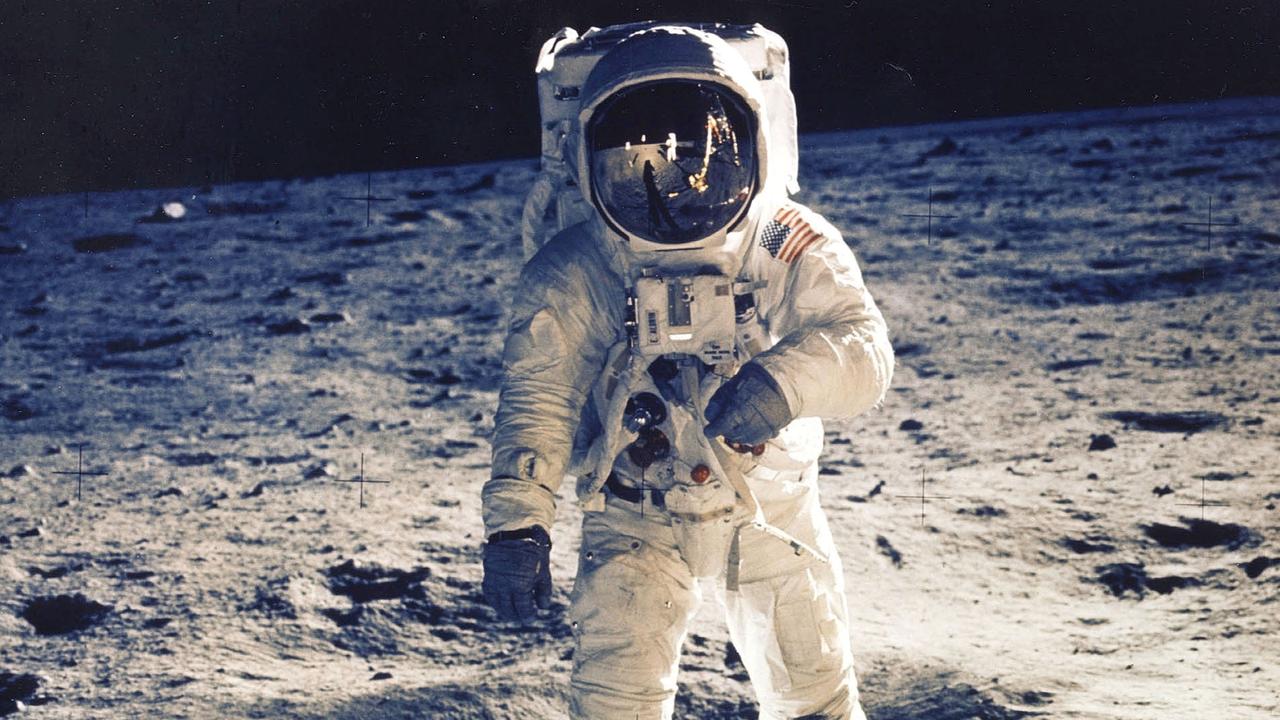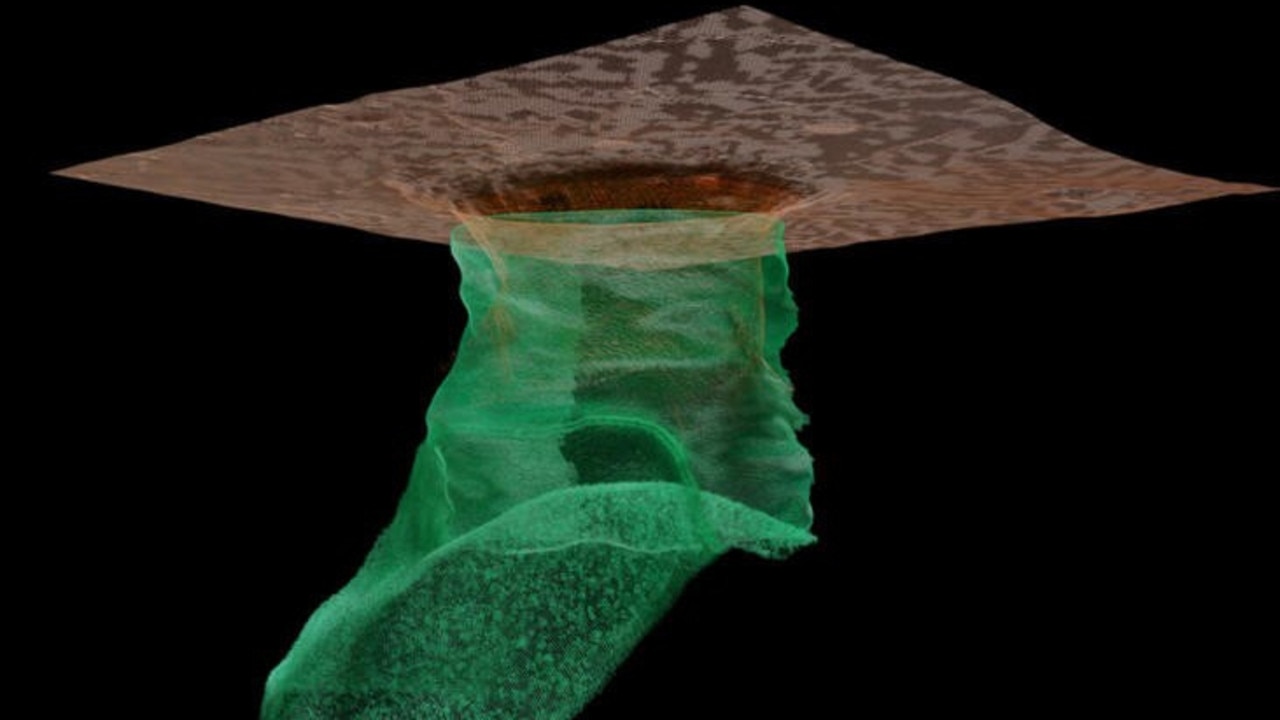Moon cave possible ‘habitation’ for astronauts in the future
A huge underground cave on the moon could serve as a future base for astronauts

READING LEVEL: GREEN
Scientists have unearthed* a significant discovery on the moon: an expansive* underground cave beneath an open pit, which could potentially serve as a future base for astronauts.
This lunar* tunnel, the first deemed accessible to humans, has been hailed as a breakthrough* in lunar exploration.
The cave lies beneath a pit* approximately 100 meters wide in the Sea of Tranquillity*, a prominent dark region on the near side of the moon, visible from Earth with the naked eye. This lunar region holds historical significance as the landing site of Apollo 11*, where Neil Armstrong and Buzz Aldrin became the first humans to walk on the moon in 1969.

Researchers estimate the cave to be between 30 and 80m long, about 45m wide, and located 130 to 170m below the lunar surface.
Unlike previous lunar caves, this one features an entry point, making it particularly noteworthy.
The discovery coincides with NASA’s plans to launch its first crewed mission to the moon in over five decades. The moon’s surface is notoriously inhospitable* to human life, exposed to high levels of cosmic radiation*, frequent meteorite impacts*, and extreme temperatures. However, experts believe underground caves could offer a more viable* solution for habitation.
“For the first time, we have located and accurately mapped a cave that is actually accessible from a pit on the lunar surface,” Leonardo Carrer, an assistant professor at the University of Trento in Italy, said.
“We were able to obtain the first 3D model* of a part of the cave’s actual shape.
“Building a base on the surface of the moon requires highly complex engineering solutions*, which may be less effective than what is already provided by nature.”

Lorenzo Bruzzone, a professor at the University of Trento, added, “These caves have been theorised* for over 50 years, but it is the first time ever that we have demonstrated* their existence.”
The moon’s surface is subjected to cosmic radiation up to 150 times more potent than Earth’s, and temperature extremes* range from 127C to -173C. Previous studies have indicated that underground caves maintain a more stable average temperature of around 17C, creating potentially suitable conditions for human habitation*.

Commenting on the study, Mahesh Anand, a professor of planetary science* and exploration at the Open University, said, “The future exploration of the moon through extended human presence would require protection from the harsh environment and micrometeoroid impacts*.”
“In that context, these underground structures could provide a suitable location for habitation purposes.”
Underground lunar caves are typically derived* ancient lava tubes* formed by volcanic activity billions of years ago.
Moon pits generally form when the ceilings of these lava tubes collapse.
GLOSSARY
- unearthed: discovered or found, especially after being hidden or unknown
- expansive: large in area or scope; extensive
- lunar: relating to the moon
- breakthrough: a significant and dramatic discovery or development
- pit: a large hole in the ground
- Sea of Tranquillity: a large, dark plain on the moon’s surface
- Apollo 11: the NASA mission that successfully landed the first humans on the moon in 1969
- cosmic radiation: high-energy particles from space that can be harmful to living organisms
- meteorite impacts: collisions of meteoroids with the surface of a planet or moon
- inhospitable: not suitable for living; harsh and unwelcoming
- viable: capable of working successfully; feasible
- 3D model: a three-dimensional representation of an object or structure
- engineering solutions: technical methods and designs used to solve problems
- theorised: suggested or supposed based on theory rather than direct evidence
- demonstrated: proven or shown to be true
- temperature extremes: very high or very low temperatures
- micrometeoroid impacts: collisions with very small meteoroids
- derived: originating from; coming from a source
- lava tubes: natural tunnels formed by flowing lava that moves beneath the hardened surface of a lava flow
- lunar reconnaissance orbiter: a NASA spacecraft launched to map the moon’s surface and gather data for future lunar exploration
- planetary science: the study of planets, moons, and planetary systems
- habitation: the act of living in a place; residence
EXTRA READING
Stars snack on planets in space
Headaches hurt differently in space
QUICK QUIZ
- What significant discovery did scientists make on the moon that could potentially serve as a future base for astronauts?
- Why is the lunar tunnel beneath the pit in the Sea of Tranquillity particularly noteworthy?
- How do underground caves on the moon offer a more viable solution for habitation compared to the moon’s surface?
- What are the challenges of living on the moon’s surface, and how do underground caves help mitigate these challenges?
- What role did NASA’s Lunar Reconnaissance Orbiter play in the discovery of the lunar cave, and what type of data did it collect?
LISTEN TO THIS STORY
CLASSROOM ACTIVITIES
1. Give it a name!
Think of the perfect name for the cave. Write down the name, then write a paragraph explaining why your name should be given to this new discovery.
Time: allow at least 30 minutes to complete this activity
Curriculum Links: English, Science
2. Extension
If a base was going to be built inside the cave, how do you think NASA would go about building it? Think about all of the steps that need to be taken, materials that would be used and the challenges of working on the moon. Can you think of a plan and solutions to the challenges? Write your plan and create a design. Use information in the story and your own research skills for information to help you.
Time: allow at least 45 minutes to complete this activity
Curriculum Links: English, Design and Technologies, Science
VCOP ACTIVITY
Down-level it
When you up-level a sentence, you do things to it to improve it: make it more interesting, or more complex.
But sometimes, when we read something it can be too complex and we don’t understand it very well. You ask someone to explain it to you, they do (in a simpler way) and you think, well why didn’t they just say that?
Go through the article and find a sentence or two that is complex, or hard to read.
Ask an adult what it means, or try and look some of the words up in the glossary.
Once you know what it means, see if you can re-write it in a simpler way- down-level it.
Make sure you don’t change the meaning of the sentence in any way though.

